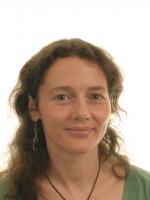
Work Package Soil
Introduction
Scotland is a small contributor to overall global Greenhouse Gas (GHG) emissions but one of the higher per capita emitters of GHG in the world. Taking responsibility to reduce GHG emissions, Scotland passed the Climate Change (Scotland) Act in 2009, committing the country to a target for reduction of GHG emissions of 42% by 2020 and 80% by 2050, targets that are amongst the highest in the world. Going further, legislation is currently going through the Scottish Parliament to set even more ambitious new targets for GHG emissions with a "net-zero" date being set for 2045. The land-use sector has an important role to play in helping to reduce net GHG emissions, both by reducing emissions and by sequestering CO2 into the soil and vegetation. Restoration of degraded peatlands has been recognised as a cost-effective way of reducing C losses and sequestering CO2 from the atmosphere and is in the process of being incorporated into national GHG accounting methods. Similarly, targets for woodland expansion reflect a policy mechanism to help store C in landscapes. The work proposed in this RD will quantify GHG emissions from various ecosystems and identify management practices which reduce GHG and sequester carbon into soil.
Aim of Research
To improve understanding of the impacts of extensive land use and management on greenhouse gas dynamics The work will focus on the impacts of land use, including the agricultural intensification of extensive/upland soils and the management of semi-natural ecosystems such as peatlands and moorlands (wet and dry heathlands excluding areas of deep peat) on soil carbon stocks and greenhouse gas dynamics to reduce the uncertainty in our estimates of GHG uptake and release from these systems and to enhance our understanding of the impacts of forest-to-bog peatland restoration and moorland management on long-term rates of C sequestration.
The main objectives of this RD are:
- Analyse historical trends in soil organic carbon and soil properties due to agricultural intensification and other land use changes in Scotland.
- Quantify GHG uptake and release in peatland ecosystems, and enhance our process-based understanding of carbon and nitrogen dynamics in these ecosystems.
- Incorporate this process understanding into existing simulation models and use these models to identify hot-spots of GHG emissions and to evaluate the impacts of land use and climate change scenarios on these systems.
Progress
Successful implementation of GHG mitigation strategies requires continuous monitoring of soil storage changes and GHG emissions to estimate net carbon sequestration in soils. Robust knowledge and tools are needed for policymakers and end users to ensure future sustainable management of soils. The heterogeneity of land surfaces requires intensive measurement campaigns, while the high cost of eddy covariance systems and their technical complexity limits the feasibility of covering large land areas. New low-cost sensors networks were investigated as a means of providing the spatially replicated sampling that is required for GHG monitoring. We worked with a SME company (Sona Vision, Aberdeen) to co-design and develop low-cost portable CO2 and CH4 sensors, employed in an existing network of sites with standard instrumentation. We developed a framework for estimating the efficacy of low-cost sensor networks, applied across landscapes, to quantify GHG fluxes.
Uncertainty in modelling results can influence policy decisions on climate change mitigation. To reduce and quantify uncertainty to inform policy we developed a multi model ensemble for GHG predictions (meta-model). As a part of this work, a multi model ensemble (DNDC, BasGra and ECOSSE) provided information on uncertainty in model estimations and projections related to model structure, a major source of uncertainty. This model ensemble can quantify uncertainties from various management interventions in peatlands and agriculture to provide options to future policy, for example, determining uncertainty associated with different management interventions, such that the confidence in GHG mitigation strategies can be quantified explicitly.
Highlights:
- SEFARI peatland researchers, in collaboration with University partners, have been awarded a Large NERC grant (£891k) on “Improving modelling and approaches to assess climate change-related thresholds and ecological shifts in the Earth’s peatland ecosystems (MOTHERSHIP)”, providing 5-years funding, expanding capability in this research area. A new SEFARI researcher-led project has also been secured (total value 1.4 million Euros) on “Synergies in integrated systems: Improving resource use efficiency while mitigating GHG emissions through well-informed decisions about Circularity”, involving partners from 10 institutions in 7 countries.
- A new £1.2M European funded project, led by SEFARI researchers, aims to find measures that can improve circularity in crop-forest-livestock integrated systems and mitigate greenhouse gas (GHG) emission. The project, Synergies in integrated systems: Improving resource use efficiency while mitigating GHG emissions through well-informed decisions about circularity (SENSE), brings together 10 Institutions from 7 countries: 4 from Europe, and 3 from South America.
- RESAS greenhouse gas modelling research showcased at the DASIM Modeler Workshop, Garmisch-Partenkirchen, 9th November 2021.
- Scotland’s first purpose-built tall tower (100 metres) greenhouse gas observatory: SEFARI Researchers, in collaboration with Edinburgh University, secured funding from NERC to build a tall tower at the James Hutton Institute’s Balruddery Farm near Dundee. The facility will help environmental scientists measure the composition of greenhouse gases, to model GHG changes in Scotland over the coming years and decades.
Restoration of degraded peatlands has been recognised as a cost-effective way of reducing C losses and sequestering CO2 from the atmosphere and is in the process of being incorporated into national GHG accounting methods. This research will address how peatland restoration will mitigate GHG emissions. This research is testing new ways of measuring GHG emissions and use of the data collected by scientists to develop computer-based modelling methods to quantify effectiveness of peatland restoration. Monitoring of GHG emissions from Forsinard site continued in year 5. Data collected was processed to estimate annual and seasonal GHG emissions. A Denitrification and Decomposition (DNDC) -meta model was developed to simulate greenhouse gas emissions from peat soils. We ran DNDC for a diverse range of peat soils and climates and Random forest based meta-models performed well for predicting N2O and CH4 emissions compared to regression based meta-models. DNDC-meta models need further testing with data to validate their suitability for decision support tool development for peatland restoration in Scotland.
Highlights:
- Novel greenhouse gas monitoring and modelling to support policy and stakeholder decision-making. SEFARI researchers have secured funding (£1.08M from NERC) for a project to apply Dynamic monitoring, reporting and verification for implementing negative emission strategies in managed systems (RETINA). The project involving multi-disciplinary collaboration with University of Aberdeen and CEH will combine use of remote and proximal sensing data with modelling to provide near real-time decision support to land managers, allowing site-specific understanding of management to promote soil carbon sequestration and greenhouse gas mitigation. The research builds on work from the SRP and has received considerable press coverage (The Courier, The Press and Journal, FutureNetZero, SeedQuest).
- SEFARI researchers, in collaboration with Edinburgh University, secured funding (£996K from NERC) for the project to build the UK’s first purpose-built tall tower (100 metres)greenhouse gas observatory at the James Hutton Institute’s Balruddery Farm near Dundee. The facility will help environmental scientists measure the composition of greenhouse gases, to model GHG changes in Scotland over the coming years and decades. The tower will be used both as a teaching resource and for deploying new scientific equipment, contributing to education and research in atmospheric composition. The initiative is led by the University of Edinburgh and James Hutton Institute along with the support of the National Physical Laboratory to help develop high-quality measurement infrastructure at the site.
Monitoring of net greenhouse gas (GHG) emissions from peatland sites undergoing restoration practices has continued. Land surface characteristics, micro-topography, and vegetation type, have important influences over soil conditions (e.g. moisture content) affecting GHG fluxes from the soil to the atmosphere. The drainage characteristics of degraded peatlands can be challenging to accommodate in biogeochemical models, but are important in defining the magnitude of GHG fluxes. Carbon dioxide and methane fluxes were quantified from forest to bog transitions, in the context of peatland restoration, to investigate these effects. Surface characteristics, particularly ridge and furrow topography associated with the legacy of forestry plantations, were found to have significant impact on greenhouse gas fluxes from soil, contributing to net emissions from eroded upland peatland. This research developed a new drainage factor (DF), responsive to seasonal variability, specifically for use in the ECOSSE model that could be used to support national greenhouse gas accounting.This was reported in a scientific publication and as a policy note for Scottish Government. To gain a better understanding of the processes that drive soil carbon dynamics, across multiple soil types and land uses, two datasets have been created. The first compares Epsilon values (a proxy for soil carbon decomposition) on paired north versus south facing mountain slopes. Little effect of topology was observed though we were able to successfully confirm Epsilon closely correlates with decomposition of wood at the sites used. The second data set demonstrates that in Scottish agricultural land, some soil minerals are associated with greater soil carbon decomposition and conversely other minerals are associated with lower rates of decomposition. In combination, the research has identified land-use, soil type and management interactions affecting soils’ capacities to store carbon, or release GHGs. An important finding was that tree planting on prime agricultural land offers greatest potential for soil carbon storage, while afforestation of marginal organic soils is likely to result in net GHG emissions, highlighting trade-offs between key soil ecosystem services.
Highlights:
- Impacts of zero-budget natural farming on food production: Zero-budget natural farming differs from traditional organic farming by aiming to change the functioning of the soil–crop system so that nutrients are made available to crops without the need for external inputs such as animal manures. Scientists from RD1.1.3 have been involved in the first study to provide a detailed assessment of the impacts of the farming system on the nitrogen available and soil conditions for crop growth. This has resulted in publication of a paper in Nature Sustainability, and the work has been covered by media both in India and UK.
The campaign of monitoring greenhouse gas emissions from peatland sites undergoing restoration management continued through 2018/19. Results indicate that the former plantation sites are returning to a more natural state in terms of their carbon budgets. The site that was restored 16 years ago was closest to net uptake seen in undisturbed sites. Measurements ongoing at the most recently felled site will provide a trajectory for carbon budgets after restoration, including methane exchange measurements. This data is being used to refine the predictions of the ECOSSE (Estimation of Carbon in Organic Soils – Sequestration and Emissions) model, that was created specifically for soil types prevalent in Scotland. Organic carbon stocks are critical to maintaining soil structure, and therefore also to water-holding capacity, ability to filter nutrients and soils’ resistance to wind/ water erosion. For agricultural soils, this directly impacts capacity to support crop production and impacts on the wider environment (e.g. water quality). New sampling and archived data from agricultural soils indicated that organic matter stocks had not changed measurably over decadal timescales, suggesting resilience of these soils to agricultural intensification. A novel stable-isotope approach is also being developed that allows predictions of land management impacts on soil organic matter decomposition rates to be made. This approach suggests that tree planting on moorland sites may result in increased loss of soil carbon, and that while soil carbon sequestration would be possible on more productive soils, this would be in conflict with current use for crop production.
Highlights:
- SEFARI scientists presented an overview of work on soil carbon sequestration in relation to land use at a workshop on UK Soil Organic Carbon Data and Modelling, CEH Lancaster in February. The aim of the workshop was to begin developing metadata from previous work to aid development and validation of new models and to develop a consortium to bid for UKRI funding.
- Research on the potential for carbon storage in Scotland's agricultural soils was presented at Climate Week 2018 in Victoria Quay, Edinburgh, 1-5 October and an article on the potential to pay farmers for carbon sequestration, the impact of increasing soil carbon on water retention, on increased resilience to erosion and on soil biodiversity was published in the Scotsman on World Soil Day.
- A new automated system for continuous monitoring of GHG emissions was funding by the Forestry Commission, extending capacity to monitor impacts of peatland forest to bog restoration management at Forsinard.
Monitoring of greenhouse gas emissions from peatland restoration sites has continued through 2017/18. This effort has been extended through collaboration with the Centre for Ecology and Hydrology, University of Highlands and Islands and University of Exeter allowing greater coverage of Flow Country sites and restoration practices. Surveys of soils from former experimental trial sites (for which there is extensive historic data of soil properties) has been completed and data will support assessment of changes in key soil properties due to changes inland use and climate over a 50-year period. Work has also continued on use of stable isotope techniques to determine rates of soil organic matter degradation, with the identification of suitable existing data sets collected following afforestation of moorland sites.
Highlights:
- Funds for Peatland Research: SEFARI researchers were awarded a £200k equipment grant from SNH Peatland Action to increase capacity for greenhouse gas (GHG) monitoring in the peatland area of Caithness and Sutherland in northern Scotland; also supported by a MoU with UHI, CEH and the University of Exeter to co-ordinate monitoring efforts in the region. Further, a grant (£210k, Norwegian Research Council) for peatland research was awarded to develop Climate smart management practises on Norwegian organic soils.
- The research is now further supported through a PhD studentship jointly funded by Forestry commission and Aberdeen University to study the impact of micro-climate on GHG emission from restored peatlands at Forsinard.
To gain a better understanding of the processes that drive CO2 emissions, we have used stable isotope techniques at a number of sites across Scotland to quantify the contribution of heterotrophic and autotrophic components to total emissions. To quantify greenhouse gas (GHG) emissions at landscape level, Forsinard peatland site has been instrumented with eddy covariance system to measure carbon emissions continuously to see how emissions change in a forest-to-bog restoration process. HPM (Holocene Peat Model) and ECOSSE (Estimation of Carbon in Organic Soils – Sequestration and Emissions) models were further developed and calibrated to simulate the impact of peatland restoration on total GHG emissions. The results from this study will inform Scottish government carbon sequestration policies.
Highlights:
- The flux tower to measure net GHG fluxes on a pristine peatland at Forsinard has now been recommissioned to provide baseline data to compare the effectiveness of forest-to-bog restorations at nearby sites.
- Researchers contributed to policy formation at the Scottish Government Consultation Workshop on Greenhouse Gas Emissions Policies and at the Natural Environment Research Council (NERC) Peatlands Programme Workshop.
Future Activities
Monitoring of net GHG emissions from peatland sites undergoing restoration practices will continue under CentrePeat in the new SRP. The data will be used to refine models for better prediction of GHG fluxes and will specifically address influences of inter-annual variation on GHG emissions. Work is in progress to develop meta-models from a suite of existing complex process-based bio-physical models. The major advantages of meta-models are their lower computational and input data requirements compared to the full models. Developing these meta-models will be useful for upscaling GHG emissions. Work is also in progress to link eddy covariance-based greenhouse gas emissions monitoring with the remote sensing based assessments to effectively monitor peatland emissions and the impact of restoration management The multi-year dataset will also be used to focus on the relative effectiveness of peatland restoration practices and will feedback to inform field management via existing stakeholder networks (National Peatland Research and Monitoring Group) and to policy (Scottish Government Decarbonisation Unit). The datasets will also be used to support collaborative efforts to utilise remote (satellite and drone) and proximal (hand-held spectrometric analysis) as rapid methods to assess soil condition and GHG fluxes.
Selected Outputs
2016/17
- A display explaining the use of stable isotopes to partition soil respiration into auto and hetero-trophic components was presented to the general public at a "Doors open day" event in Aberdeen. There is a small video clip of the display available from Barry Thornton.
2017/18
- Kuhnert, M.; Yeluripati, J.; Smith; et al (2017) Impact of input data aggregation on simulated NPP of wheat, General Assembly of the European Geoscience Union, EGU 2017, Vienna, Austria, 23 Apr 2017 - 28 Apr 2017.
- Khomic, M. (2017) Adaptation Research Issues: Natural Environment. Report prepared for CxC.
- Begum, K., Kuhnert, M., Yeluripati, J., Glendining, M., Smith, P., 2017. Simulating soil carbon sequestration from long term fertilizer and manure additions under continuous wheat using the DailyDayCent model. Nutr Cycl Agroecosyst 109, 291–302.
2018/19
- Report entitled 'Changes in the fertility of Scottish agricultural soils: a summary of detail collected from various sources' available from Tony Edwards.
- A report has been produced on “Carbon storage and Greenhouse gas (GHG) emissions from restored peatlands”. This report is available on request from Jagadeesh Yeluripati.
- Begum, K.; Kuhnert, M.; Yeluripati, J.; Ogle, S.; Parton, W.; Abdul Kader, M.; Smith, P. (2018) Soil organic carbon sequestration and mitigation potential in a rice cropland in Bangladesh - a modelling approach. Field Crop Research, 226: 16-27.
- Policy summary 'Does peatland restoration enhance ecosystem resilience? Impact of peatland restoration on ecosystem service delivery.' available from Jagadeesh Yeluripati.
2019/20
- Artz, R; Donaldson-Selby, G; Morrison J;, Yeluripati, J; Coyle, M. Pre-restoration carbon dioxide emissions of an upland eroded peatland, Scotland, UK. Poster presentation at the IUCN UK Peatland Programme conference, Belfast, 1-3 October 2019.
- Artz, R and Lilly, A. Peat erosion and how restoration stops losing the ground beneath our feet. Popular article for World Soils Day.
- Based on some of the modelling techniques developed in this work contributed to produce a paper on “Potential yield challenges to scale-up of zero budget natural farming” which is published in Nature Sustainability in January 2020.
2020/21
- Mazzola, V., Perks, M.P., Smith, J., Yeluripati, J., Xenakis, G., n.d. Seasonal patterns of greenhouse gas emissions from a forest-to-bog restored site in northern Scotland: Influence of microtopography and vegetation on carbon dioxide and methane dynamics. European Journal of Soil Science n/a.
- Giltrap, D., Yeluripati, J., Smith, P., Fitton, N., Smith, W., Grant, B., Dorich, C.D., Deng, J., Topp, C.F., Abdalla, M., Liáng, L.L., Snow, V., 2020. Global Research Alliance N2O chamber methodology guidelines: Summary of modeling approaches. Journal of Environmental Quality 49, 1168–1185.
- Premrov, A., Wilson, D., Saunders, M., Yeluripati, J., Renou-Wilson, F., 2021. CO2 fluxes from drained and rewetted peatlands using a new ECOSSE model water table simulation approach. Science of The Total Environment 754, 142433.
- The research was presented at the Hutton Symposium (Nov 2020) and this presentation is available from the PI, Barry Thornton.
- Artz, Ball, Gimona. Peatland restoration: Modelling efficacy using Earth Observations. Research Note)
- Giltrap D, Yeluripati J, Smith P, et al Global research alliance N2O chamber methodology guidelines: Summary of modelling approaches. Journal of Environmental Quality
- Oral presentation on “Development of DNDC-meta model to estimate GHG emissions from Norwegian organic soils” at International Symposium on climate resilient agri-environmental systems , 4th November 2020.(3) Upon nominated from DEFRA, represented UK in GRA cropland research group meeting and gave oral presentation on RETINA and GRAMP on 10th December 2020. Representatives from 32 countries attended this meeting.
2021/22
- Mazzola, V., Perks, M.P., Smith, J., Yeluripati, J., Xenakis, G., 2022. Assessing soil carbon dioxide and methane fluxes from a Scots pine raised bog-edge-woodland. Journal of Environmental Management 302, 114061.
- Artz et al (2022) Net carbon dioxide emissions from an eroding Atlantic blanket bog . Biogeochemistry.




